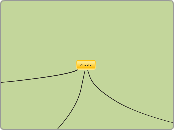arabera Wong Yien 13 years ago
1195
Coasts

arabera Wong Yien 13 years ago
1195

Honelako gehiago
Low-energy waves have a swash that is stronger than the backwash. this occurs on a gently slopping beach. When the backwash returns to the sea, some sediments are left on the coast. Low-energy waves are also called constructive waves.
Longshore Drift
Waves approaches the coast at an angle, the swash carries sediments up onto the coast at that angle. The backswash then carries the sediments back into the sea
A wave is a rising and falling movement of the water surface.It is usually produced by winds blowing across the sea or ocean
large waves cause coastal erosion
High-energy waves have a backwash stronger than the swas.Causing more materials to be removed from the beach instead of being deposited.
During low tides, the water retreats down the coast
During high tides, water extends up the coast.
Encouraging growth of coral reefs
Inffectivenesss
Corals can only grow well in clear waters
It requires constant effort from various groups of people
Reduces coastal erosion by reducing speeds of waves as they approach the shores.
Beach nurishment
Cost is high for beach quality sand
Lasts only for about 10 years
Adding large amounts of sand to a beach that have been eroded from a beach to replenish sand eroded by the longshore drift.
Planting Mangroves along the shores
As young mangrove trees are fragile, mangrove planting requires cooperation of the local people living in the area.
Planting mangroves helps to protect coasts from erosion as many moagrove trees have prop roots or kneed roots that anchor the tress frimly in the soil
Stabilising coastal dunes
Ineffectivenesss
Human activities sucha as property development ad recreational activities have to be minimised along these coasts
Effectivenesss
Planing vegetation such as marram grass along coasts, roots of vegetation trap and bind the sand together, preventing sand from being blown inland
Gabions
Ineffectivesness
Gabions can be easily destroyed by powerfull waves during storms and the wire rusts easily.
Gabions are temporial features as they last ony to about 15 years whereas seawalls, breakwaters and groynes lasts for about 30 years. Gabions are much cheaper compared to other coastal protection measures such as seawalls, breakwaters and groynes.
Gabions are rocks stored in wire chages to form a wall to protect the coast from erosion and other coastal protection such as seawalls
Groynes
Ineffectives
The materials deposits by the longshore drift would not be replenished at the other side of the groyne. Hence the beach further down the coast may be eroded away.
A groyne is a low wall built at right angles to prevent materials from being transported away by the longshore drift .Transported materials accumulate on the side of the groynefaceing the longshore drift.
Breakwaters
breakwaters are granite walls built parallelto the coast. It creates a zone of shallow water between itself and the coast, such that the waves will break before reaching the coast.
Breakwaters are unable to provide complete protection as the leave areas of the coast unprotected, which are more prone to erosion.
Seawalls
Ineffectiveness
As waves break against the sea wall, the wave is redirected backwards resuslting in a strong backwash which would wear away the base of the seawall causing it to weaken and eventually collasp[e
Effectiveness
A seawall is usually made out of concrete, which absorbs the energy of the wave